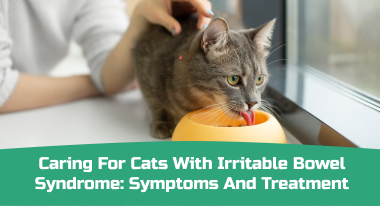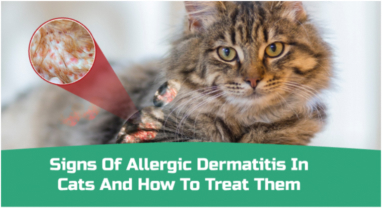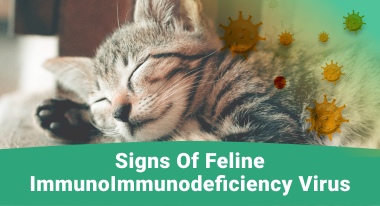Table of Contents
As a pet owner, it’s essential to be aware of the various dental issues that can affect your furry friend, including the condition known as retained deciduous teeth in baby cats. Retained deciduous teeth occur when a cat’s baby teeth do not fall out as their adult teeth grow. This can lead to various dental and health problems, making it essential for pet owners to recognize the signs and seek proper veterinary care.
In this article, we will discuss what retained deciduous teeth are, the signs and symptoms to look out for, and the potential risks and health problems associated with the condition. We’ll also explore the treatment options available and provide tips for preventing dental issues in baby cats. By understanding the importance of dental care in cats, pet owners can help ensure their furry companions live long, healthy lives.
What Should You Know About Retained Deciduous Teeth Problems?
Retaining baby teeth can lead to several issues for a growing dog or cat. The permanent tooth erupts right before the deciduous tooth when the canine teeth in the upper jaw are retained. The result is periodontal disease, and eventual permanent tooth loss as tartar builds up between the two teeth.
The permanent canine tooth will erupt inside the deciduous tooth towards the tongue in the mandible (lower jaw). These crooked teeth are frequently in traumatic touch with the mouth’s soft tissues and are excruciatingly painful. Even the cutest dog might get irritable when a sharp tooth presses into the roof of the mouth.
Crowding, tartar buildup, and periodontal disease will result from retained incisor and premolar teeth. Additionally, when teeth do not emerge according to the typical pattern, the jaw may be malformed due to unfavorable interlocking. This unfavorable interlock will prevent the maxilla and mandibles from developing typically and may prevent the pet from eating normally.
Malocclusion occurs when there is an abnormal relationship between the maxilla and the mandibles. One of the most frequent orthodontic issues that the veterinary dental specialists at Animal Dental Care and Oral Surgery often treat is malocclusions brought on by retained deciduous teeth.
Types of Retained Deciduous Teeth in Baby Cats
It’s important to note that any retained deciduous tooth can cause dental problems if left untreated, so it’s crucial to consult a veterinarian if your cat has a retained tooth.
| Type of Retained Deciduous Tooth | Description |
| Retained Canine Tooth | It occurs when the baby canine tooth does not fall out, and the permanent canine tooth grows alongside it. This can cause overcrowding and misalignment of the teeth. |
| Retained Incisor Tooth | It occurs when a baby incisor tooth does not fall out, and the permanent incisor tooth grows alongside it. This can cause overcrowding and misalignment of the teeth. |
| Retained Premolar Tooth | It occurs when a baby’s premolar tooth does not fall out, and the permanent premolar tooth grows alongside it. This can cause overcrowding, misalignment of the teeth, and potential dental problems such as tooth decay and gum disease. |
| Retained Molar Tooth | It occurs when a baby molar tooth does not fall out, and the permanent molar tooth grows alongside it. This can cause overcrowding, misalignment of the teeth, and potential dental problems such as tooth decay and gum disease. |
Spotting the Signs of Retained Deciduous Teeth in Felines
Retained deciduous teeth, or baby teeth, can be a common issue in felines. It occurs when a cat’s permanent teeth fail to emerge and replace their temporary ones. The infographic outlines the common signs of retained deciduous teeth in felines to ensure sound the oral health of your furry friend:
#1. Swelling in the Mouth or Cheeks Cats with RDT may experience swelling in their mouth or cheeks, which signifies that their baby teeth have become impacted & are causing discomfort. #2. Pain or Discomfort Cats with retained deciduous teeth may exhibit pain or discomfort, such as reluctance to chew or decreased appetite. #3. Oral problems Retained baby teeth can lead to other oral issues, such as gum disease, tartar build-up, and tooth decay. #4. Drooling or Salivating RDT may cause discomfort while eating or drinking, leading to drooling or excessive salivation. #5. Changes in Eating Habits Cats with RDT may alter their eating habits, such as choosing soft food over hard food or avoiding food altogether. |
The Root Causes of Retained Deciduous Teeth in Felines
Retained deciduous teeth in cats, also known as retained baby teeth, can be caused by various factors, including genetic predisposition, overcrowding of teeth in the mouth, and delayed eruption of permanent teeth.
In some cases, certain breeds of cats may be more prone to retaining their baby teeth, such as Persian cats. The baby teeth may remain in place when there is not enough space in the mouth for all the permanent teeth to grow.
Trauma or injury to the mouth or jaw can also lead to retained deciduous teeth. In these cases, the damage may interfere with the normal eruption of permanent teeth, leading to the retention of baby teeth.
Retained deciduous teeth can cause several cat problems, including overcrowding, dental misalignment, and an increased risk of dental disease. It is essential to have a veterinarian check a cat’s teeth regularly to identify and address any issues related to retained baby teeth. In some cases, extraction of the baby teeth may be necessary to prevent complications and ensure good dental health.
How are Cats’ Retained Deciduous Teeth Diagnosed?
Pet owners and veterinarians might spot kittens with retained deciduous teeth during routine checkups. The following diagnostic techniques will probably be used if you or your vet suspect that your cat has one or more deciduous teeth:
- Check the position of the permanent teeth on your cat’s teeth to check if they are erupting in front of, behind, or next to any deciduous teeth still in their sockets.
- Deciduous teeth should be checked to see if they are loose or have been kept and are still firmly in place.
- Track the development of the teeth over time, noting which deciduous teeth have fallen out and which permanent teeth have fully emerged.
- Get an X-ray of your cat’s mouth to aid in the diagnosis.
If your cat is an adult and some of its baby teeth are still there, the vet will likely use the same diagnostic techniques to determine which teeth may need to be removed to make more room for the adult teeth that have erupted into the same socket. Because they may feel uncomfortable and are more prone to get an oral infection, adult cats with this sickness need to be treated right once.
How To Treat Retained Deciduous In Cats?
Your kitten will need to have the retained deciduous teeth out as soon as possible if your veterinarian determines that your cat has one or more of these teeth. During your cat’s general anesthesia, this will take place. By extracting these teeth, the permanent adult teeth will be able to occupy their sockets and fully develop into the correct positions. If the neutering procedure still needs to be done, this can be carried out concurrently.
A veterinarian with advanced training in dentistry and orthodontics may occasionally be required to treat adult cats who still have some of their baby teeth. It can be a very delicate and exact technique to extract teeth, especially when the patient is an adult animal and the teeth are canine teeth, and it demands training and experience.
Is It Possible for Cats to Recover Retained Deciduous Teeth?
A kitten will likely recover from surgery without any long-term damage after a veterinarian has pulled the remaining deciduous teeth. The anesthetic may cause the cat to feel sleepy for a few hours to a few days, and the discomfort and drugs may make it uninterested in food. The kitten will most likely be prescribed painkillers, antibiotics to avoid infection and a follow-up consultation with your veterinarian. An adult cat with her remaining deciduous teeth removed will require much longer healing than a kitten. Adult cats must also schedule follow-up visits with either your veterinarian or a veterinary dentist/orthodontist.
To Summarize
Retained deciduous teeth in baby cats can be a common and concerning issue for pet owners. It is essential to be aware of the signs and symptoms of retained deciduous teeth, such as bad breath, excessive drooling, and difficulty eating. Early detection and treatment are crucial in preventing dental problems and ensuring the long-term oral health of your cat.
As a pet owner, it is also essential to practice good oral hygiene habits with your cat, such as brushing their teeth regularly and providing them with dental chews and toys. By taking an active role in your cat’s dental health, you can help to prevent dental problems and ensure that your furry friend leads a happy and healthy life.
Disclaimer: The content on the site is for educational purposes only, and it does not provide medical advice. The shared information must not be treated as a substitute for or alternative for medical practitioner advice, diagnosis, or treatment. Regarding any concerns about your pet’s health, seeking veterinary guidance is of utmost necessity. Each pet has specific health, fitness & nutrition needs. Do not disregard, avoid or delay pet health-related advice from veterinarians based on reading the information provided on this site.
FAQ’s
1. Is it necessary to extract retained deciduous teeth?
Answer: Yes, it is vital to remove baby cats’ retained teeth. This is because retained deciduous teeth may result in several dental issues, including crowding, alignment issues, and tooth rot.
2. How much does having a cat’s baby teeth removed cost?
Answer: On average, the cost of removing retained deciduous teeth in cats can range from $300 to $800 or more.
3. Does it hurt when cats get their teeth pulled?
Answer: Although cats may experience discomfort during tooth extraction, the surgery is typically carried out under anesthetic to reduce suffering.
4. Can a cat get a tooth pulled without being sedated?
Answer: No, a cat shouldn’t ever have a tooth pulled without being sedated. A surgical operation known as a tooth extraction must be performed to remove a tooth from its socket. If the cat is not given any anesthetic during this surgery, it may hurt and feel uncomfortable.




